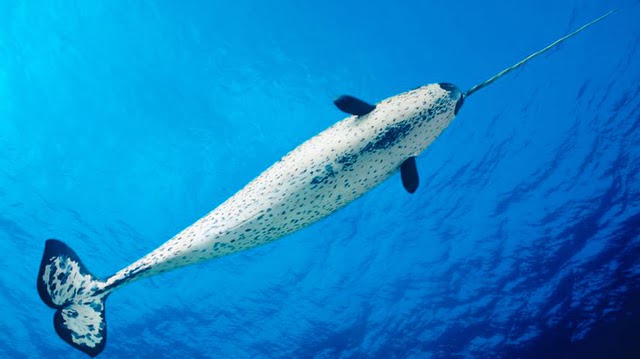Quck answer
Narwhals, a species of toothed whale, have been caught on video using their long tusks to hunt. The footage shows the narwhals using their tusks to stun fish before eating them. This behavior is previously undocumented and sheds light on the unique hunting strategies of these mysterious creatures. The tusk of the narwhal is actually a tooth that can grow up to 10 feet long and is only found in males, making it a rare and prized possession. While the exact purpose of the tusk is still unknown, this new video offers a glimpse into the remarkable abilities of these amazing animals.
Wild Animals

Newly released footage of narwhals using their tusks to capture prey has sparked a debate over the function of the unique tooth. The narwhal’s spiraled tusk, made of ivory, grows up to 9 feet (3 meters) long and protrudes through their upper lip. While scientists generally agree that the tusk is used for attracting partners, recent drone footage shot in Tremblay Sound, Nunavut, suggests that it is also used to stun fish for easier capture. The video shows narwhals giving a light tap to fish, leaving them immobile and allowing for effortless consumption. The tusk’s sensitivity makes it unlikely that narwhals use it for battling. Despite ongoing controversy over the tusk’s function, research shows that narwhals possess advanced navigation and echolocation abilities, rivaling those of the beluga whale.
FAQ
1. What are narwhals?
Narwhals are medium-sized toothed whales that inhabit the Arctic waters of Canada, Greenland, Norway, and Russia. They are known for their long, spiral tusks that can grow up to 9 feet in length.
2. How do narwhals use their tusks to hunt?
Narwhals use their tusks to stun and immobilize their prey, which includes fish, squid, and shrimp. They will swim rapidly towards their prey and then strike them with their tusks, which can be used to impale them or knock them unconscious.
3. Are narwhals endangered?
Yes, narwhals are considered to be near-threatened by the International Union for Conservation of Nature (IUCN). They are hunted by indigenous people for their meat, blubber, and tusks, and their habitat is being threatened by climate change.
4. How long can narwhals hold their breath?
Narwhals can hold their breath for up to 25 minutes, which is longer than most other marine mammals. They are able to do this because they have a high concentration of myoglobin in their muscles, which helps them store oxygen.
5. What is the purpose of the narwhal tusk?
The purpose of the narwhal tusk is still not completely understood. It is believed to play a role in mating and social behavior, as well as in hunting. It may also be used to break through ice when the narwhal surfaces for air.
6. How do narwhals communicate?
Narwhals communicate with each other using a series of clicks, whistles, and pulsed calls. They also use body language, such as tail slapping and head bobbing, to communicate with each other.
7. What is the lifespan of a narwhal?
Narwhals can live up to 50 years in the wild, although their lifespan is typically shorter due to hunting and environmental factors.
8. What is the diet of a narwhal?
Narwhals primarily feed on fish, squid, and shrimp. They are known to dive to depths of up to 1,500 meters in search of food.
9. How do narwhals adapt to their Arctic environment?
Narwhals have several adaptations that allow them to survive in their Arctic environment, including a thick layer of blubber for insulation, a flexible neck that allows them to navigate through ice, and a reduced number of teeth to prevent heat loss through their mouth.
10. How can we protect narwhals?
We can protect narwhals by reducing hunting, protecting their habitat, and reducing carbon emissions to combat climate change. It is also important to educate people about the importance of these unique and fascinating creatures.





Leave a Reply